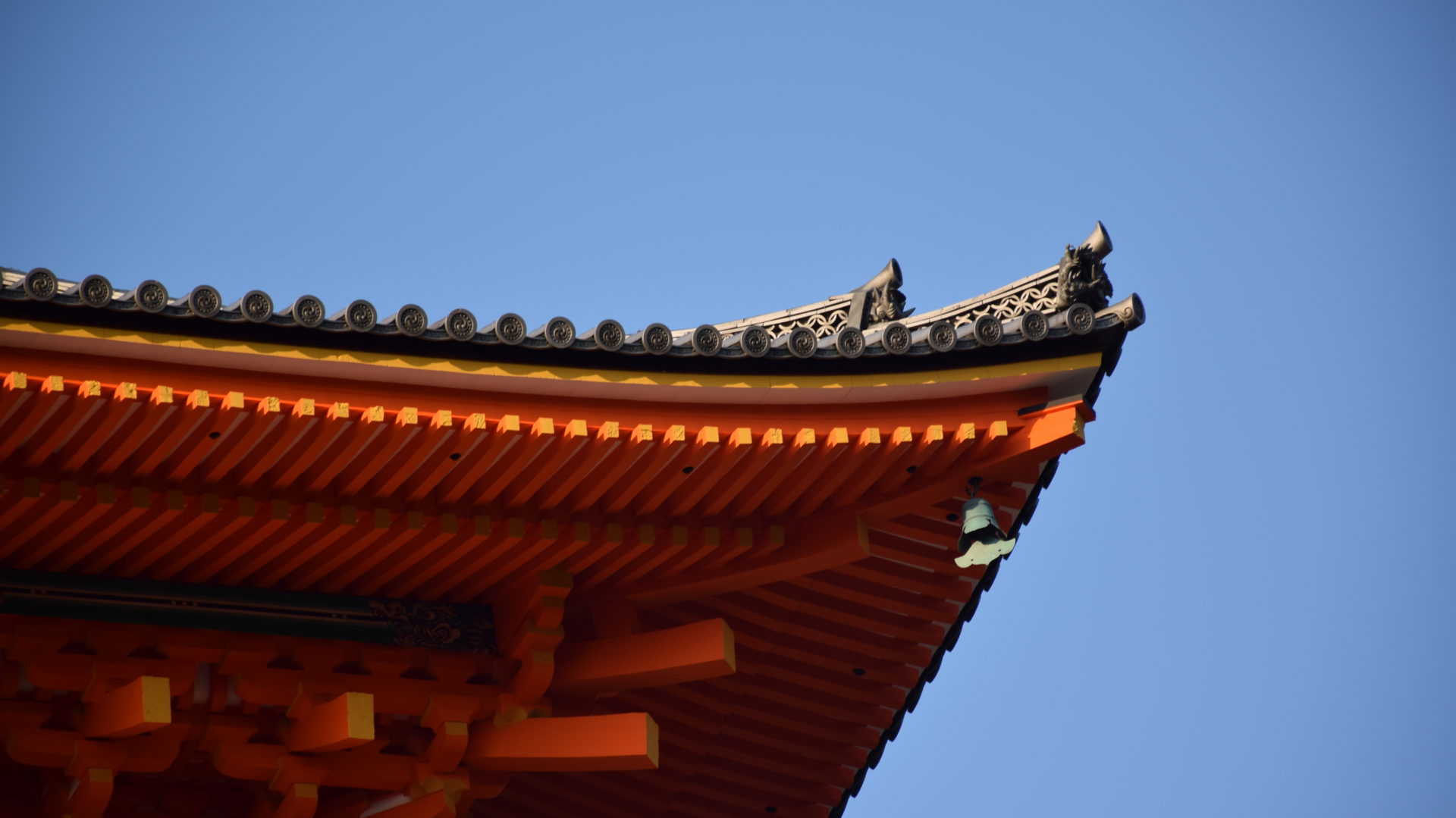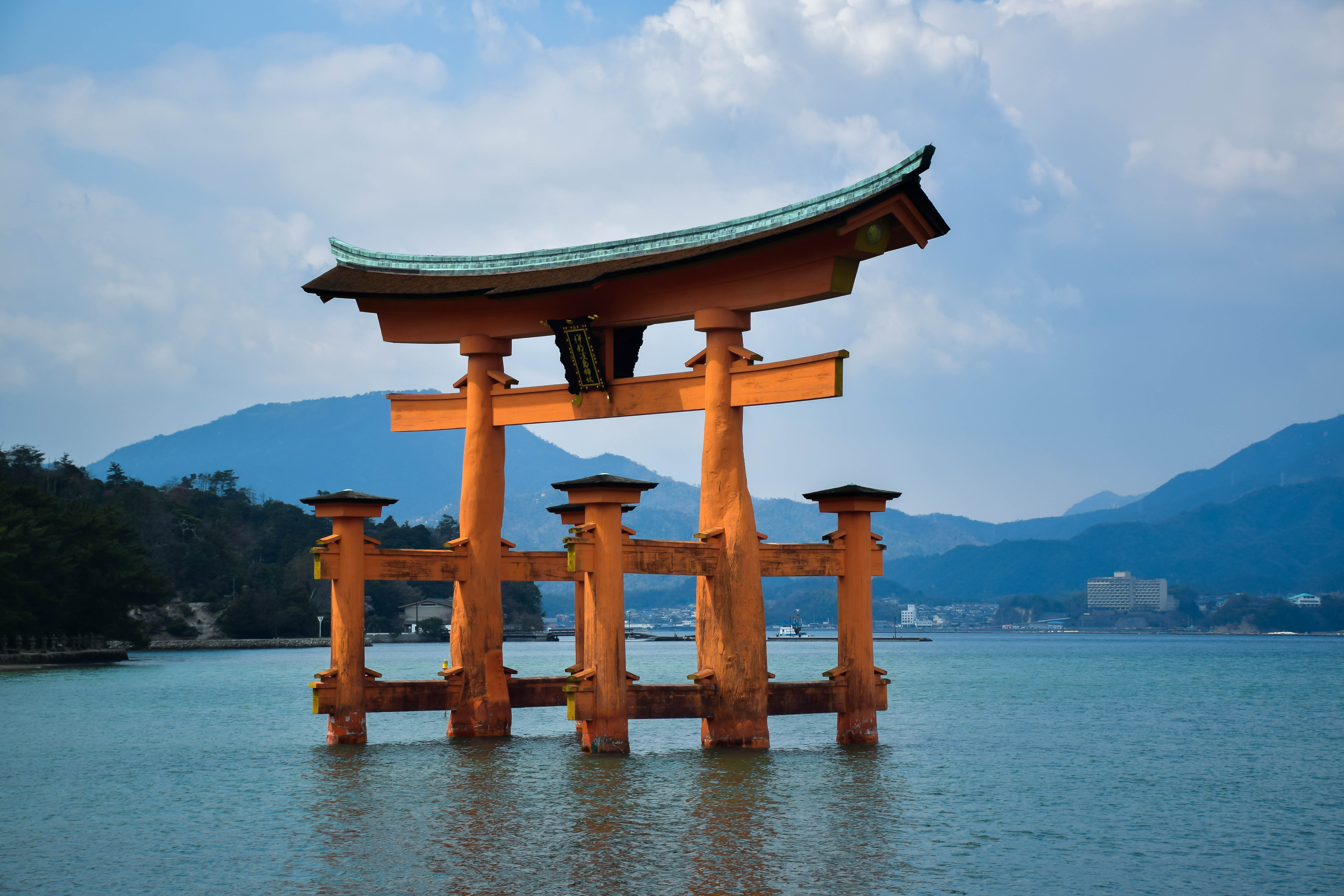
Itsukushima Island, colloquially know as Miyajima, “shrine island,” is a popular tourist destination and truly special place in Hiroshima prefecture. It is easily accessible by two different ferries; one takes about 10 mins from Miyajima-guchi train station, but if you wake up in Hiroshima City and want a little more scenic journey I recommend taking the ferry from the Peace Memorial Park. On the way you will pass the Genbaku Dome once more, go under bridges of canals that empty into Hiroshima Bay, pass oyster farms, and see misty blue grey island tops poking up from the surface of the Inland Sea.
The ride takes about 45 minutes and the anticipation of seeing the floating O-torii gate builds as the island gets closer.


When first arriving on the island you will notice that there are deer, deer everywhere. They wander around like squirrels would in a city park, waiting for someone to feed them deliberately or unintentionally. They may just steal a map or two from an unsuspecting tourist. The deer know, to really experience a place you must look up and around you and not down to see where you are going. Or maybe they just may be hungry and they will eat paper if not careful.
The real draw to the island is Itsukushima Shrine, a UNESCO World Heritage Site that features the famous orange O-torii Gate that at high tide looks as if it floats on the surface of the water. During low tide guests can walk out to the gate from the shore, but wooden boats are available that row shrine patrons out there when the tide is in. In the Shinto religion, which emphasizes the spirits present in nature, the O-torii Gate represents the gate between the physical and spirit worlds.


It is a stunning sight to see in person. Each angle yields new dramatic views that even while seeing it can seem too beautiful to be real. Tourists line up to take group photos, deer pose in the photos too to bring added authenticity.

The gate itself is only one part of the larger Itsukushima Shrine. I loved this shrine and is one of the most unique that I’ve visited in Japan. It feels like a series of docks connected by covered bridges with statues, lanterns, and ceremony rooms.



When in the center of the shrine and looking out, the six pillars of the O-torii Gate appear flat, revealing the typical shape of a torii gate. The ‘O’ of this particular torii gate denotes it as “big.” And it is certainly massive. In the top arch seven tons of stone hold it in place, with no foundation dug into the beach where it sits.


Passing through the shrine and exiting to the other side of the beach is a small resort town with old fashioned gift shops and restaurants. Purveyors sell different souvenirs from open cedar shops with kawara tiled roofs. It’s hard to actually pin down the specific meibutsu here, but there are many vendors selling grilled oyster yaki-onigiri, fried oysters stacked like dango on sticks, and other delicious momiji shaped items. If you are looking for a good omiyage from Miyajima (and Hiroshima in general), I would suggest momiji manju which are Japanese maple leaf shaped pastries filled with red bean paste called anko. We picked up a box of these ourselves.
Before leaving we took one last break at a stone bench sitting across from the gate. Miyajima is a must stop to be sure. It can be crowded as it is very popular, but it is of the most beautiful destinations in Japan. It is like taking a step back in time, the shrine reminding of the simple aesthetic natural beauty between mountain and sea that has existed for centuries.

Hiroshima prefecture is a treasure. After thoroughly enjoying the sights, delicious food and warmth of its locals, we leave on a ferry and move by local train one prefecture over to our next stop, Okayama.


2 thoughts on “Miyajima Island”
Feels like being there
Very beautiful! I thought O-Torii gate was two different structures but soon realized it was the angle from which you shot it.
Comments are closed.